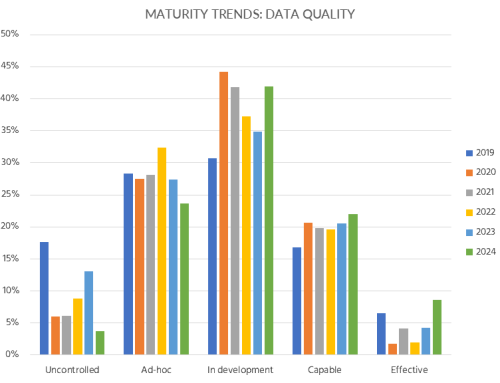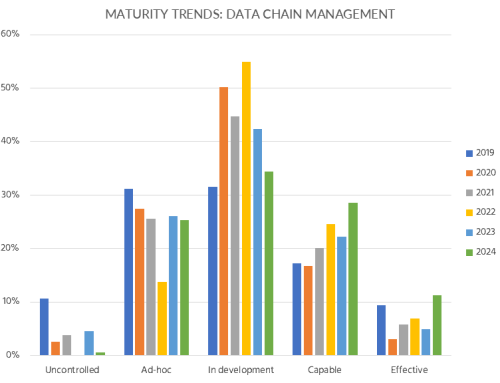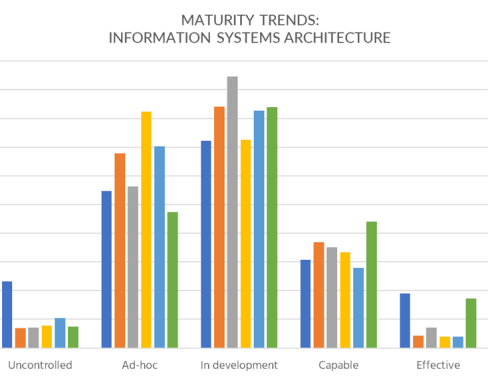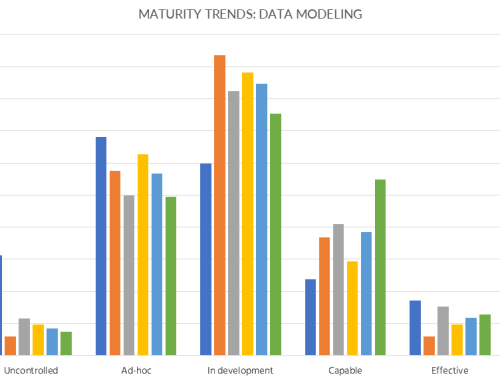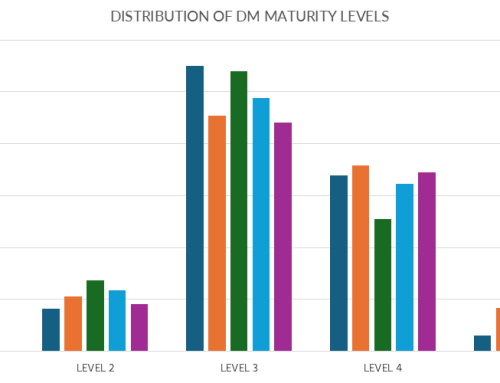This article discusses the evolving trends of the data governance.
This is the second article in the series Tracking Data Management Maturity: A Five-Year Perspective (2019–2024).
Its purpose is to examine the evolving trends in data governance capabilities and their constituent components, and to introduce a new approach to measuring maturity based on the outcomes of these capabilities.
In this article, we will:
- Define the governance capability within the context of the O.R.A.N.G.E. Data Management Framework, including its goals and key outcomes
- Highlight five-year trends in the development of this capability and its underlying components
- Provide practical recommendations for further strengthening governance maturity
Let’s begin by defining what the governance capability for data management entails, along with its goals and measurable outcomes.
Governance For Data Management
Challenges
The challenges of defining the “data governance” capability within the data management community have been widely addressed in my books and publications. For those interested in exploring diverse perspectives, I recommend reviewing the Data Management Toolkit 2.0, Aligning Data and AI Governance, and the article series Reshaping Data Governance and Data Management & Data Governance 101.
Here is a summary of the key points:
- There is no commonly accepted definition of data governance, its constituent components, or its expected deliverables.
- The terms “data management” and “data governance” are often used interchangeably, contributing to confusion.
- The term “data governance” is frequently misunderstood—it does not govern data itself, but instead governs the management of data, as emphasized by leading frameworks such as DAMA-DMBOK2 and DCAM®.
Given these inconsistencies, each organization must take responsibility for defining its data governance approach.
Definition
The O.R.A.N.G.E. Data Management Framework adopts—and adapts—the concept of a business capability specifically for the context of data management.
According to the TOGAF® Standard, a business capability is “a particular ability that a business may possess or exchange to achieve a specific purpose.” Building on this, the O.R.A.N.G.E. Framework defines the governance capability for data management as the business capability to exercise authority, control, and oversight over data management activities.
Data management itself is defined as the business capability to execute, administer, and direct activities related to safeguarding data assets and delivering value from them.
In essence, the governance capability supervises and directs the execution of data management to ensure that its goals are effectively met.
As illustrated in Figure 1, the governance capability is positioned as one of the core sub-capabilities within the broader data management framework.
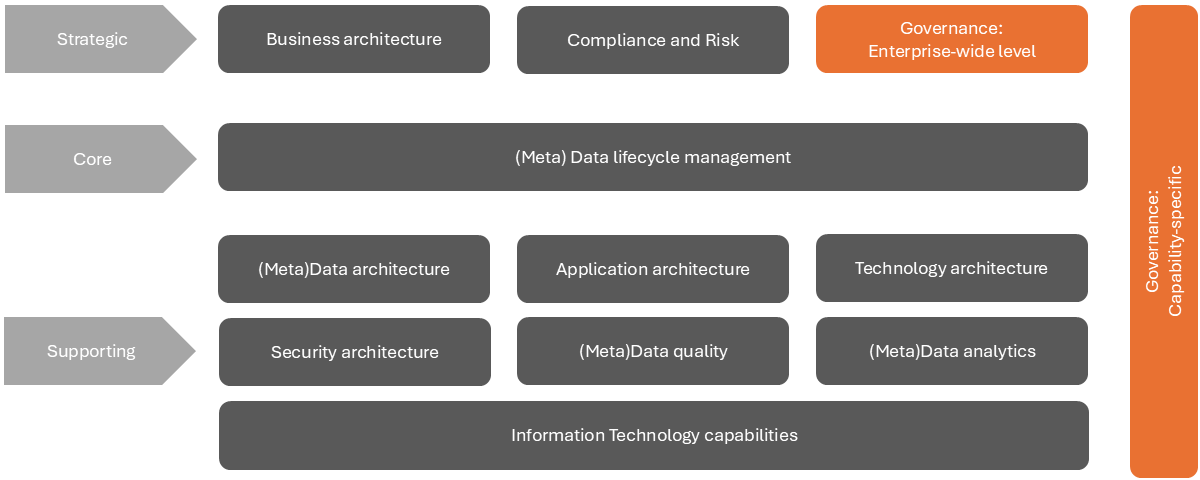
Figure 1: The Data Management Capability Map.
The governance capability must be established at two levels: enterprise-wide (encompassing the entire DM capability) and the DM sub-capability-specific. The goals and outcomes of the governance capability at these two levels differ. This article focuses only on the enterprise-wide governance capability.
Enterprise-Wide Governance Capability: Purpose, Outcomes, and Capability Components
The purpose of a capability represents its high-level aspiration—it answers the question: “Why does this capability exist?” It is stable over time and cannot be directly measured.
For the enterprise-wide governance capability, the purpose can be defined as follows:
Ensure that data is managed as a strategic, enterprise-wide asset that delivers business value, supports compliance, and enables coordinated decision-making across all domains.
If you (the reader) have alternative views or suggestions, I would be glad to hear them.
To assess whether this purpose is being fulfilled, we rely on outcomes—measurable results that demonstrate progress toward the purpose. Outcomes answer the question: “What measurable result indicates success?”
Examples of outcomes for the above purpose include:
- Consistent control of data across its full lifecycle
- Clearly defined accountabilities for data assets across the enterprise
- Improved data-driven decision-making at all levels of the organization
While outcomes must be measurable, they are often influenced by multiple factors. For example, achieving consistent data lifecycle control requires a combination of processes, policies, and roles. So how do we measure such outcomes in practice?
We begin by identifying the underlying factors that drive outcomes and mapping them accordingly. The O.R.A.N.G.E. Data Management Framework defines these factors as constituent components of a capability. Building on TOGAF®, the framework extends the original four components to seven.
Although a capability defines what the organization must do, practitioners also need to understand how, when, and where it should be done. These seven components not only support measurement—they also operationalize the capability into a functioning business discipline.
Figure 2 illustrates these components and shows how they link to the overall governance capability.
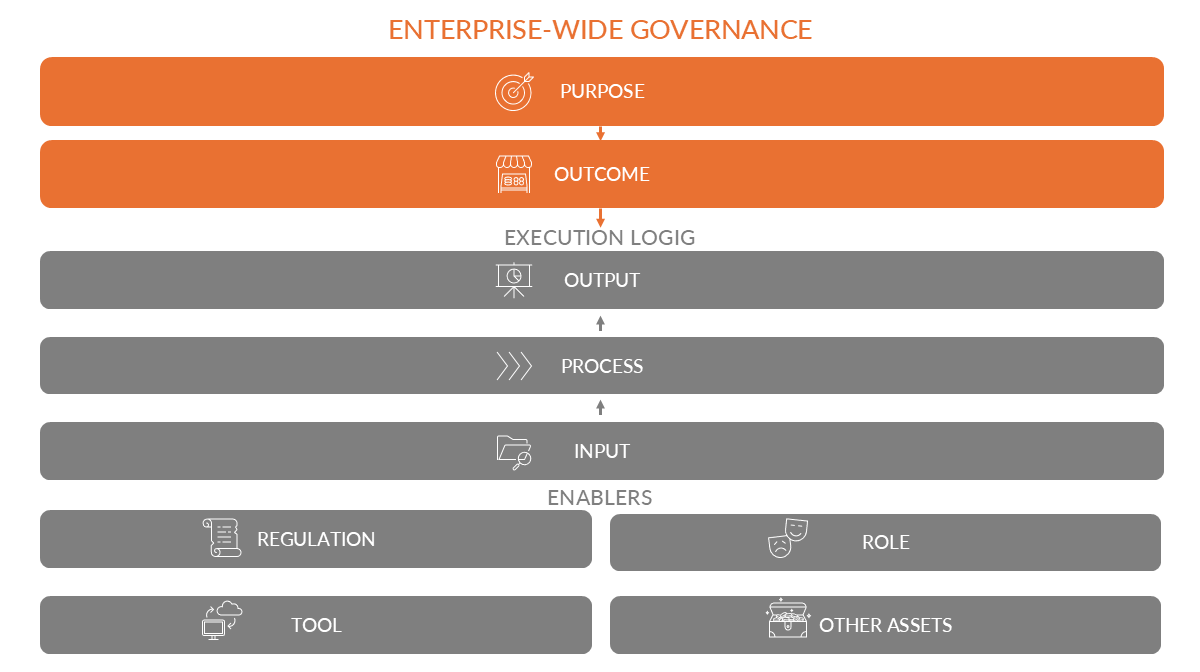
Figure 2: Approach to operationalizing the governance capability.
Designing the governance capability begins with clearly defining its purpose—the strategic aspiration it is intended to fulfill. Progress toward that purpose is assessed through outcomes, which are measurable results that indicate whether the desired value is being achieved.
One or more outputs enable each outcome—the tangible deliverables that provide evidence of progress. These outputs are not created in isolation; they are the result of a process that operates on specific inputs. In short, it is the combination of input and process that drives the creation of each output.
To support this operational flow, a set of enabling components must be in place. These include regulations that guide the process, roles that perform the necessary activities, IT tools that support execution and automation, and other assets that provide structure and support. While these components do not produce outcomes directly, they ensure that processes are executed effectively, allowing outputs to be consistently delivered—and outcomes to be achieved.
With this structure in mind, let’s explore how the governance capability has evolved over the past five years.
Enterprise-Wide Governance Capability: 5-Year Trends
Figure 3 illustrates a gradual improvement in the maturity of the governance capability over the period from 2019 to 2024.
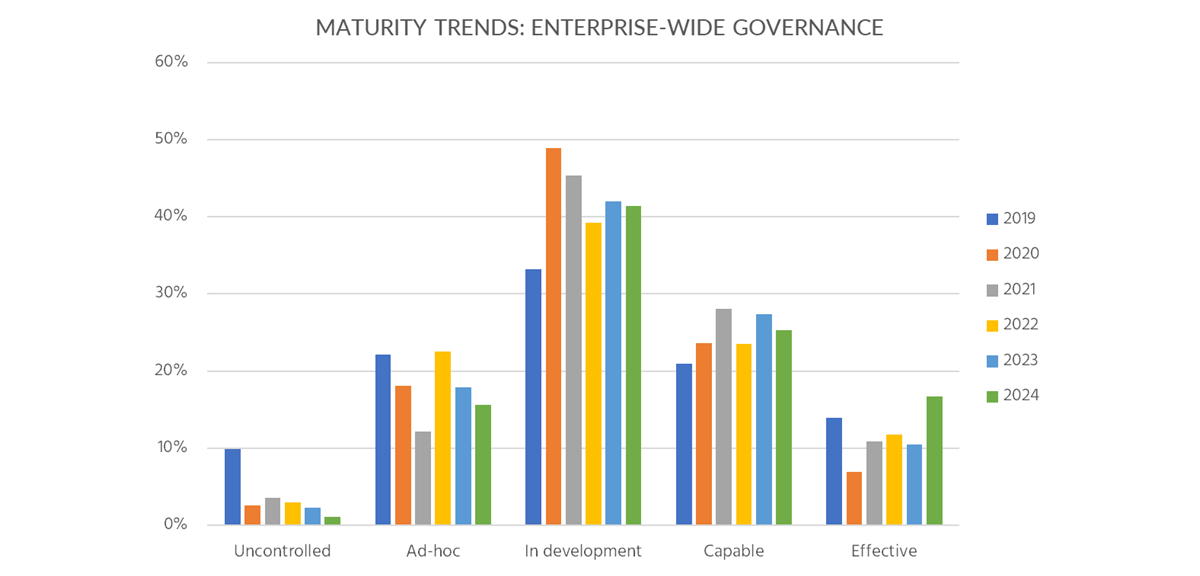
Figure 3: Trends in developing the enterprise-wide governance capability for data management.
While a large portion of organizations continue to operate at the “in development” stage, this group has begun to decline as more organizations progress toward formalized practices. At the same time, the number of organizations reaching the “capable” and “effective” maturity levels has steadily increased. This trend indicates a growing shift toward more structured and controlled implementation of enterprise-wide governance—characterized by clearer roles, established rules, and more consistent performance oversight.
As discussed earlier, several outcomes can confirm and help measure the purpose’s achievements. However, delivering these outcomes requires the combination of several capability components working together. Therefore, the maturity assessment has been performed for each capability component (or their combination).
Let me demonstrate the trends in their development.
Indicator 1: Data management organization in place
The data management organization provides an operating model and organizational structure, including governing bodies and the architecture of data management roles and corresponding accountabilities.
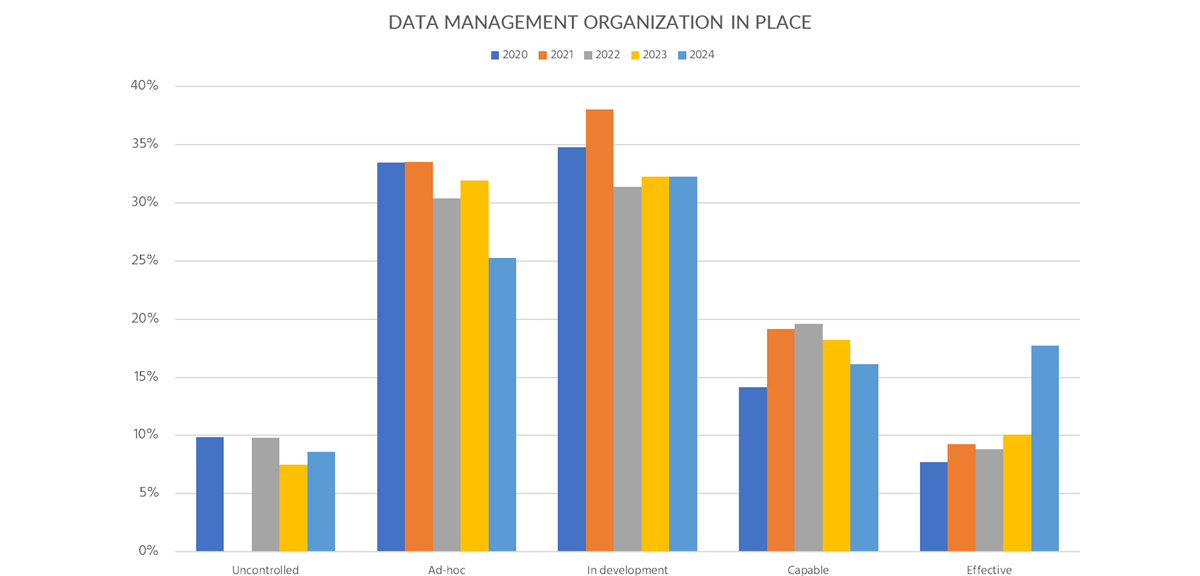
Figure 4: Trends for the indicator “DM Organization in place.”
The trend for the indicator “Data management organization in place,” as shown in Figure 4, reflects a gradual shift from lower maturity levels, such as “ad-hoc” and “in development,” toward more advanced stages. Although a notable portion of organizations still operate with limited structure, there is a steady increase in those reaching the “effective” level of organization. This suggests a growing commitment to formalizing dedicated data management functions, even as many organizations continue to build the necessary oversight and structure.
Indicator 2: Data management policies and processes in place
This indicator demonstrates that the policies and processes defining the establishment of the DM organization are in place.
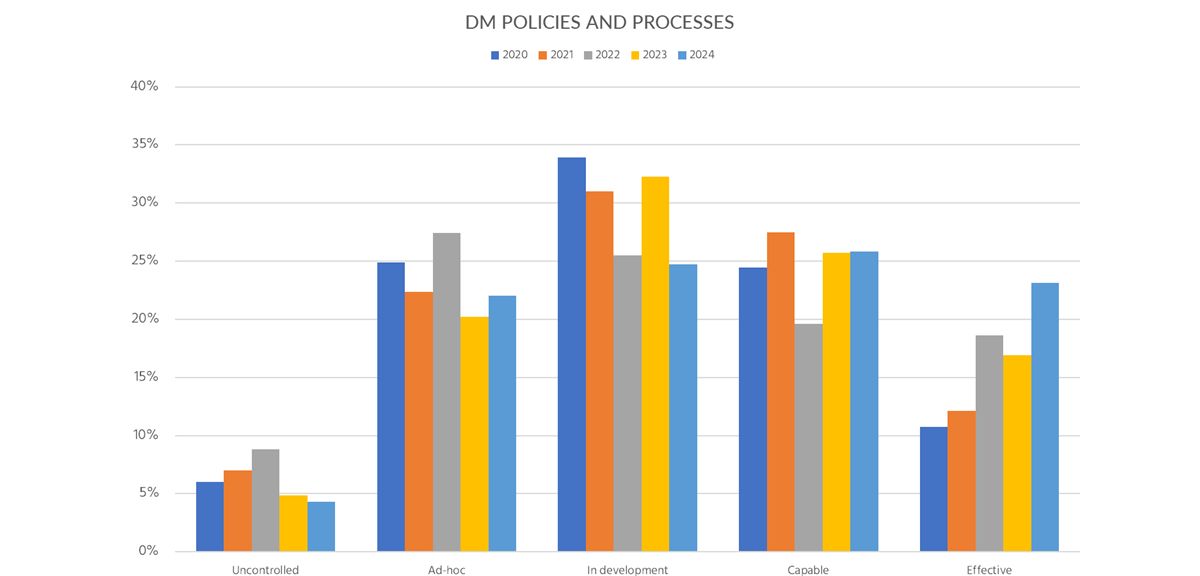
Figure 5: Trends for the indicator “DM policies and processes in place.”
Figure 5 shows a steady upward trend in organizational maturity for this indicator. While the “in development” stage remains prominent, its presence has slightly declined over time, accompanied by consistent growth in the “capable” and “effective” levels. This reflects a broader movement toward formalizing and implementing data policies and processes—shifting from basic documentation to deeper operational integration.
Indicator 3: Dedicated budget for DM and DG initiatives
This indicator assesses whether sufficient budgets support the establishment of governance capabilities and the performance of various DM initiatives.

Figure 6: Trends for the indicator “Budget for DM and DG initiatives.”
The trend for this indicator, illustrated in Figure 6, shows a steady increase in financial commitment to data management. While the “ad-hoc” and “in development” stages remain present, their prevalence has gradually declined. At the same time, more organizations are reaching higher maturity levels—indicating a shift from irregular or minimal funding toward more consistent and sustained budget allocations that support structured data management initiatives.
Indicator 4: Awareness and support of top management
This indicator helps measure how actively data management is recognized and championed by senior leadership within the organization.
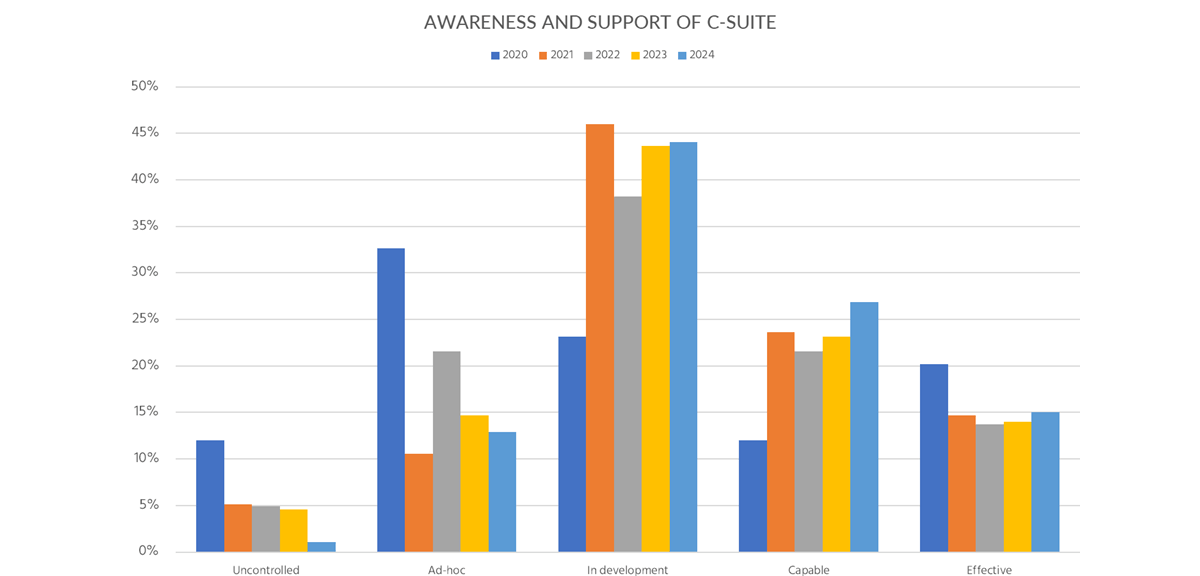
Figure 7: Trends for the indicator “Awareness and support of top management.”
The chart for Indicator 4 (Figure 7) shows a persistent concentration in the “in development” category, indicating that many organizations are still in the process of building executive-level engagement. At the same time, steady growth in the “capable” segment suggests increasing involvement from C-suite leaders. However, the limited movement in the “effective” category indicates that while executive awareness is improving, fully embedded and sustained leadership support remains a challenge for most organizations.
Summary and Recommendations
The O.R.A.N.G.E. Data Management Framework introduces a structured, capability-based approach to designing and measuring data governance maturity-by linking purpose, outcomes, outputs, and seven enabling components.
Maturity trends from 2019 to 2024 reveal a gradual but steady shift from ad-hoc and developing practices toward more formalized governance structures, clearer accountabilities, and growing executive support.
To accelerate progress in governance capability development:
- Clarify the purpose and outcomes of the governance capability: An organization should define what the governance function is intended to achieve and how success will be measured—both enterprise-wide and within specific domains.
- Formalize the foundational components: An organization should establish clear processes, policies, roles, and supporting tools to ensure governance outputs are consistently delivered and sustained.
- Integrate maturity and performance monitoring into routine management: An organization should regularly assess its governance capability using defined KPIs and qualitative indicators to guide continuous improvement.
- Strengthen executive-level support: An organization should align governance objectives with strategic business drivers, regulatory obligations, and enterprise risk priorities to secure long-term C-suite commitment.


